Victor Owen Johnson


One of my most vivid childhood memories goes back to the Boxing Day family gatherings in my paternal grandparents house at 12 The Close, Brumby. This seemed to be the only day that the “front parlour” was open for use. There was always a roaring coal fire and the flames would reflect from the highly polished “death penny” honouring the sacrifice of grandfathers brother Victor Owen Johnson that stood in the hearth. It may have been the reflection of the dancing flames that drew me to it or simply its shape but I would make a bee - line for it every year and pick it up before anyone could stop me. I suspect every December 27th grandma would silently curse me as besides having to clean the grate and dust the room she would also have to polish the plaque to remove my sticky fingerprints – sorry grandma.
I never knew Victor Owen, but he is one of the first people I see every morning. A photograph of him is in the Johnson family picture frame hanging in my hallway and I glance at it as I head for the kitchen to make the first coffee of the morning. He sits there proudly in uniform beside a large potted aspidistra, forever aged 19. As I write this introduction for a booklet to commemorate the 100th anniversary of his death on 7th November 1916 it seems to give a far deeper meaning to the words “we will remember them”.
Martin Johnson
Victor Owen was born on 27th July 1897 the seventh child and third son of John Johnson and Annie (nee Spencer).
John was born at Ashby in 1864, the fourth known generation of Johnsons to have lived there. He married Annie Spencer from Hibaldstow on 28th May 1884 at St. Peters Church Bottesford. Their first two children Louisa and Fred were born in Ashby in 1886 and 1887. By 1890 the family had moved to the Lambeth area of London where John worked as a milk carrier and their next three children were born, Mary Elizabeth (1890), Charles (1892) and Annie (1893). Mary Elizabeth died as an infant and was buried in London. Before 1895 they had moved back to Ashby where the last five of the family were born. Jessie (1895), Victor Owen (1897), George William (1900), Ralph (1902) and Nellie (known as Ellen) (1904). John taking employment as an Ironstone Miner.
Victor’s siblings.
 Charles with wife Mary and son Morris
Charles with wife Mary and son Morris
Annie with son Deryck
 Nellie
Nellie
Fred with wife Polly
The Johnson Family Tree (part)
HANNAH JOHNSON (d.1841 Ashby)
|
BRUMMET JOHNSON (b.1808 Corringham, d. 1889 Ashby)
|
GEORGE JOHNSON (b. 1837 Ashby, d. 1915 Ashby)
|
JOHN JOHNSON (b.1864 Ashby, d 1930)
| |
CHARLES JOHNSON VICTOR OWEN JOHNSON
| |
(b. 1891 London d. 1965 Brumby) (b. 1897 Ashby d.1916 France)
|
BRYAN JOHNSON
(b.1928 Ashby)
|
MARTIN JOHNSON
(b. 1954 Gunness)
The 1901 census records the family as living at 1 Oxford Street, Ashby with (Victor) Owen* shown as three years old. Whilst the 1911 census shows the family living at 35 High Street, Ashby, with Victor Owen now 13 working as a labourer for a coal dealer.

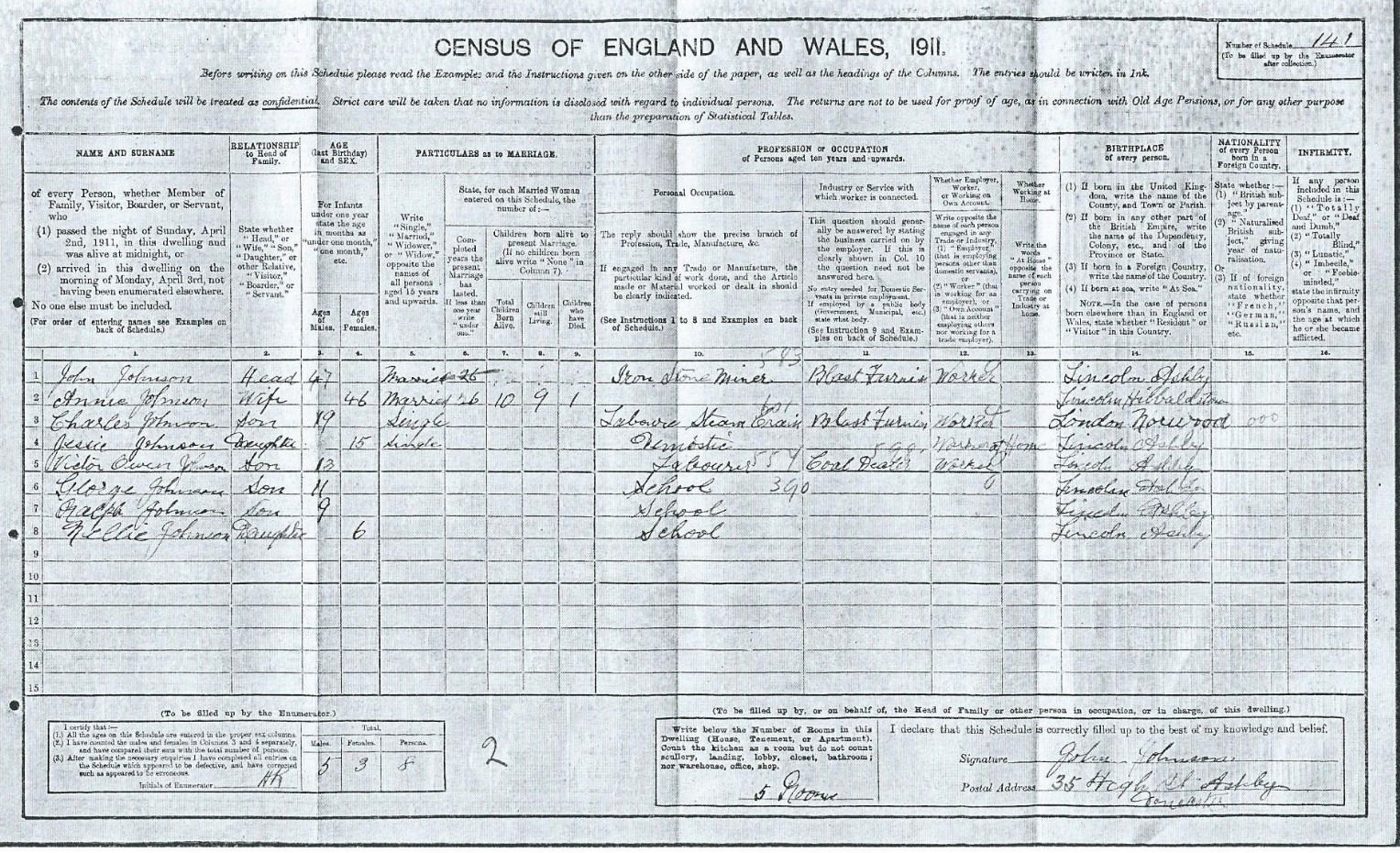
* Both Victor’s brother Charles and his nephew Bryan referred to Victor Owen as Owen so it would seem that in the family he went by his middle name rather than his first.
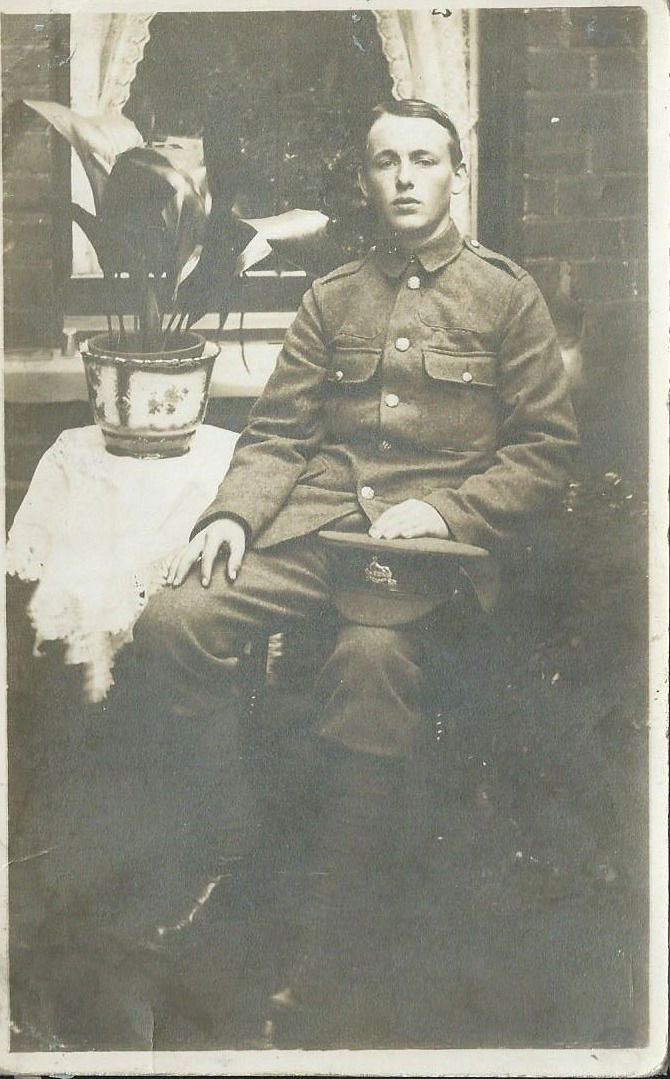
The Ministry of Defence records show that Victor enlisted at Scunthorpe and was posted to the Depot on 13th January 1915 with the service number 14945 and rank of Private. Five days later on the 18th January he was posted to the 9th Battalion. The 9th was a service Battalion formed in November 1914 at Lincoln, part of the Fourth New Army in the 91st Brigade of the 30th Division. On 10th April 1915 it became the 2nd Reserve Battalion.
His records show that on the 14th May 1915 he was discharged the cause given as “Ceasing to fulfil Army medical requirements”. Other information on the records give his height on enlistment as 5 feet 7¼ inches and his weight as 125 pounds (8 stone 13 pounds). His civilian trade was listed as that of a platelayer – a person whose job it is to inspect and maintain the track of a railway installation.
He obviously re-enlisted at a later date with the Service number 18900 and the rank of Private although the date for this is unknown as the records have been destroyed.
The publication “Soldiers Died in the Great War” lists Victor as “Killed in action” France and Flanders 7th November 1916”.
The Commonwealth War Graves
Commission provided details of his resting place:
Vermelles British Cemetery
Pas de Calais, France
V.G. 14 Plot 5 Row G grave 14

This headstone showing that at the time of his death he was serving in the 1st Battalion, Lincolnshire Regiment and at some point had been promoted to Lance Corporal.
The book “The History of The Lincolnshire Regiment 1914 – 1918” does not mention any specific action by the 1st Battalion during the early part of November 1916. The Regiment was involved at the Battle of Triepval Ridge (26th – 28th September), Zenith Trench (23rd October) and Battle of Ancre (13th – 18th November) but does not mention of the 1st Battalion as taking part.
The Battalion is mentioned in a section headed “Trench Warfare from July 1916 to the 1st March 1917.
“The battles of the Somme, in which all battalions of the Lincolnshire Regiment in France in 1916 took part, began in July and ended in November, alternated with periods passed in training camps, or in the monotony, discomfort and danger, of tours in the trenches. Few noteworthy incidents mark the history of the battalions during the period ending in December 1916, which followed the last of the Somme battles. Casualties continued, generally caused by artillery fire, though small in number.
The 1st Lincolnshire was joined at Maries les Maines, in October 1916 by the 2nd Contingent of the Bermuda Volunteers – 2nd Lieutenant Trimington and thirty other ranks, trained as machine gunners. The first contingent had lost fifty percent of their strength in the fighting at Gueudencourt, and were trained as Lewis gunners: the two contingents were now amalgamated and furnished twelve Lewis guns teams to the 1st Battalion. .
It is quite possible that Victor numbered in those casualties “generally caused by artillery fire” but we will never know for certain.
Vermelles British Cemetery

Vermelles British Cemetery Plot 5 Row G
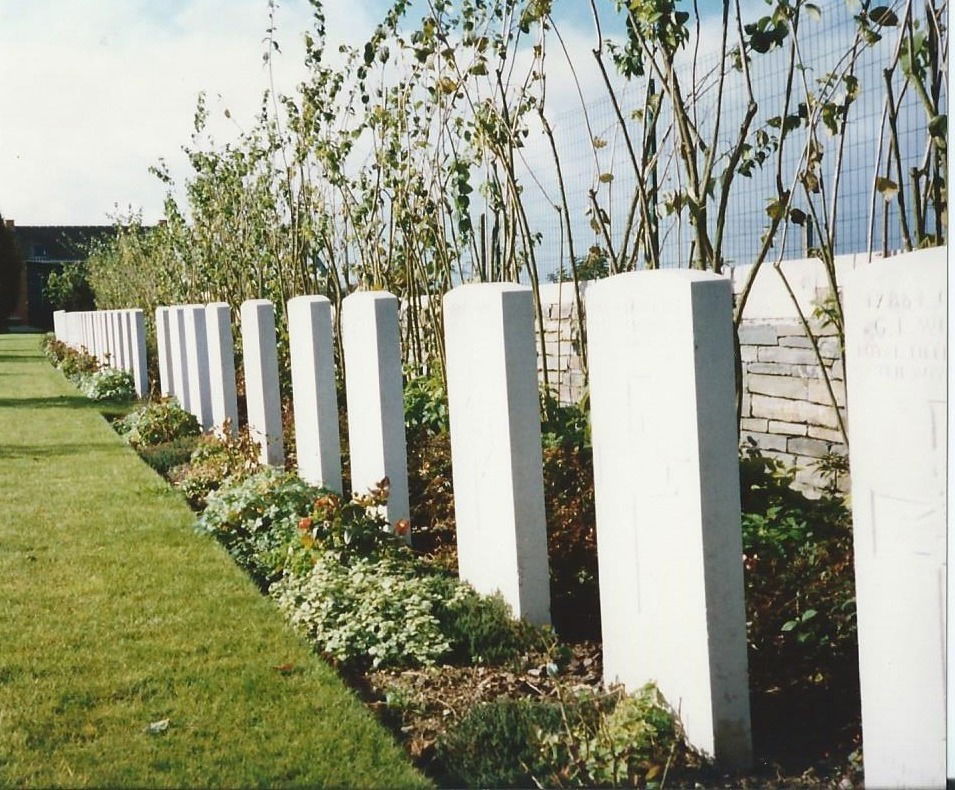
Locally Victor’s loss is recorded in the Regimental Loss Book held in the Regimental Chapel in Lincoln Minster (Cathedral) where he is erroneously listed as a Private, the Memorial windows of Ashby Wesley Chapel and on the Ashby War Memorial


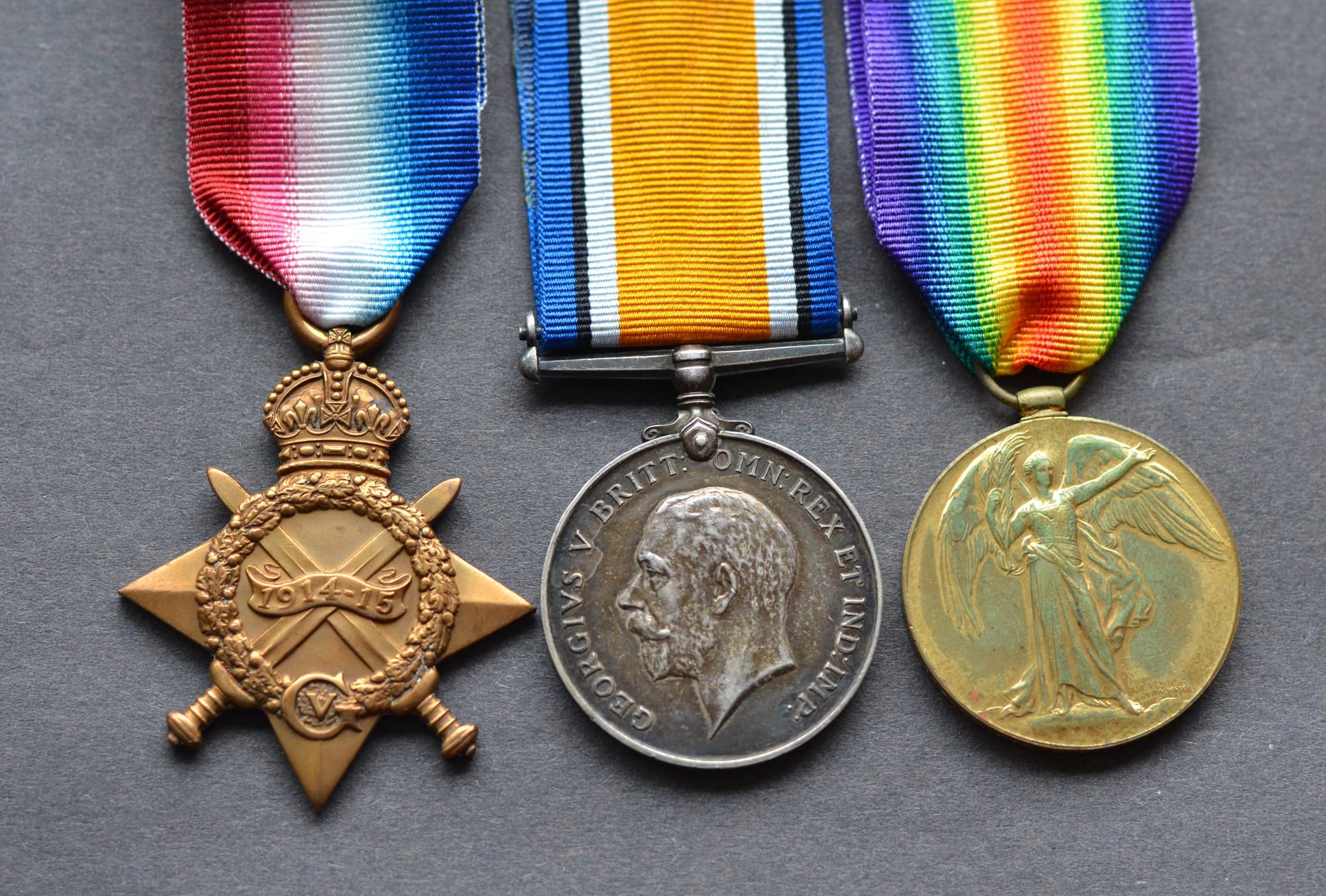
Left – The 1914 -15 Star – awarded to all personnel who served in a theatre of War between 5th August 1914 and 31st December 1915 and who did not qualify for the 1914 Star.
Centre – The British War Medal – awarded to all those who served in a theatre of war up to the official end of the War in 1920.
Right – The Victory medal – issued to all those who entered a theatre of war.
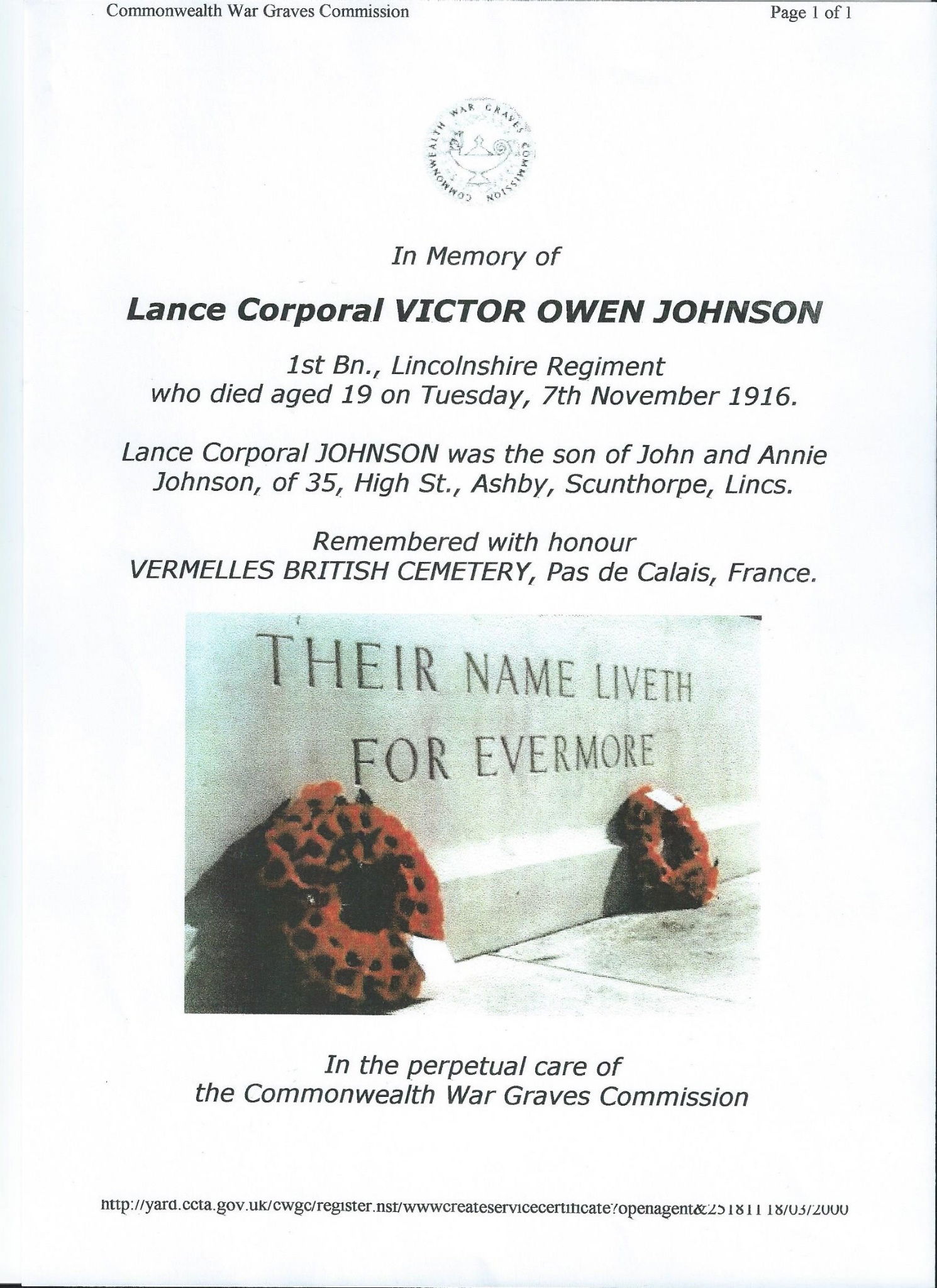
By permission of the Commonwealth War Graves Commission
